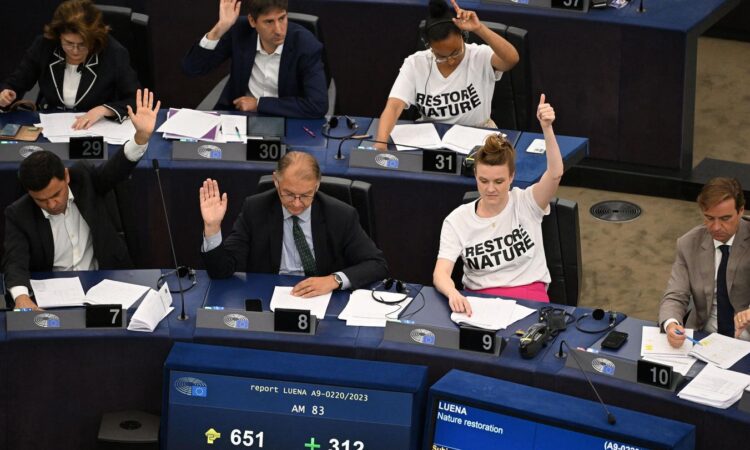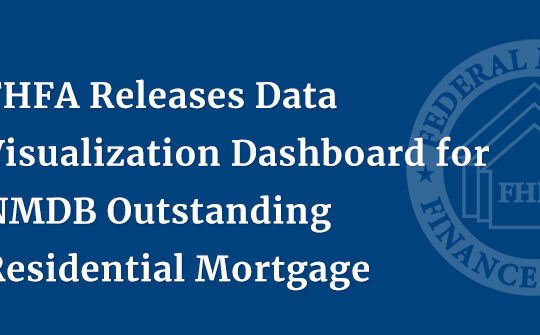
Members of the European Parliament wearing tee-shirts reading “Restore Nature” react as they take … [+]
Campaigners exploded with joy when EU ministers finally agreed to pass the controversial ‘Nature Restoration Law’ this month.
Backing the law — whose approval had been delayed by the refusal of various countries, including Hungary and Italy, to support its aim to restore 20% of the Europe’s natural areas by 2030 — is a historic step forward.
European nature is in a terrible state, with 81% of habitats in poor condition and 63% of species with low conservation status, according to the European Environment Agency. This is both bad for biodiversity and for the EU’s ability to meet its climate targets.
Healthy soils and trees absorb carbon, while those in poor health release it, which contributes to global warming. Restoring damaged rivers, lakes, wetlands, forests, grasslands, marine habitats and other ecosystems will improve the overall resilience and quality of nature in Europe, but is also critical for long-term food security and climate change mitigation.
In the world of business and finance, the importance of nature for the economy and the impact of industrial practices on biodiversity are increasingly being recognized. One sign of this trend is the growing number of firms opting to voluntarily disclose their nature-related dependencies – under the Taskforce on Nature-Related Disclosures (TNFD).
The TNFD is a disclosure framework based on the original Climate version – the Taskforce on Climate-Related Financial Disclosures (TCFD) – with a couple of differences. The TNFD gives importance to companies disclosing risks and impacts, it underlines the importance of localizing these, and requires transparency throughout the value chain.
The TNFD was adopted in September 2023 and, from the get-go, had more supporters than the TCFD had after 18 months of existence.
Its supporters hope this momentum will continue. While it took the TCFD around five years to become mandatory, the assumption is that companies will have to comply with TNFD rather more quickly. Indeed, 320 organisations pledged to be early TNFD adopters at the World Economic Forum’s annual meeting in Davos earlier this year.
There is already some precedent for mandatory nature-based disclosure. In France, since 2021, Article 29 of the French law requires institutions to disclose biodiversity risks and impacts. Meanwhile, in Switzerland, the Swiss regulator FINMA has mandated that banks and insurance companies start incorporating analysis of nature-related financial risks into their processes from 1 January 2025.
The EU’s Nature Restoration Law passing is a once-in-a-generation moment. It is ambitious, with a focus on preventing further deterioration of nature and on restoration — both of which are paramount for reaching climate and biodiversity goals. However, implementing the law will require money, lots of it.
According to the December 2023 UN State of Finance for Nature report, global finance flows to nature-based solutions of around $200 billion are massively outweighed by finance flows with direct negative impacts on nature of almost $7 trillion.
There are provisions within EU law that address how the regulation might be funded through public and private finance, including a stipulation for the inclusion of biodiversity objectives within the national budgets of EU member states. One of the main steps with which countries must grapple within the next 12 months is the compilation of a report on any gaps blocking implementation and solutions, including financial measures to turn ambitious words into concrete actions.
All of this means that corporates and financiers need to think about climate and nature as a coherent whole when making financial decisions, both on the risk and on the opportunity side.
On the risk side, it is important for them to have a better understanding of nature-related financial risks and a better system in place to measure them. On the opportunity side, given the emphasis on nature restoration, there will be many chances for private financing. Further, restored ecosystems represent a big risk mitigation asset as deteriorated nature is more vulnerable to climate disaster, leading to more damage and higher costs to repair.
Within our work we have seen this trend emerging already. A couple of weeks ago, our ClimateWise insurance platform incorporated nature into its disclosure principles and we published various use cases on how the insurance industry can enable investment in nature.
These use cases included a debt-for-nature swap supported by credit insurance for marine conservation in Ecuador and specific insurance solutions for natural assets like mangroves, corals, and seagrass beds.
On the banking and investment side, we are encouraging financiers to bring nature into their existing climate engagements through the Lets Discuss Nature with Climate guide. This is designed for relationship managers of banks, analysts and portfolio managers and aims to enable constructive, informative conversations between these financiers, portfolio clients and investee companies about nature and climate transition plans.
The challenges of financing nature restoration should not be underestimated.
But there are exciting solutions being developed, which should boost biodiversity and be of great interest to those in the world of business and finance looking to innovate and become more sustainable.






